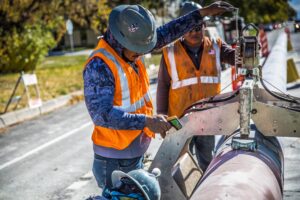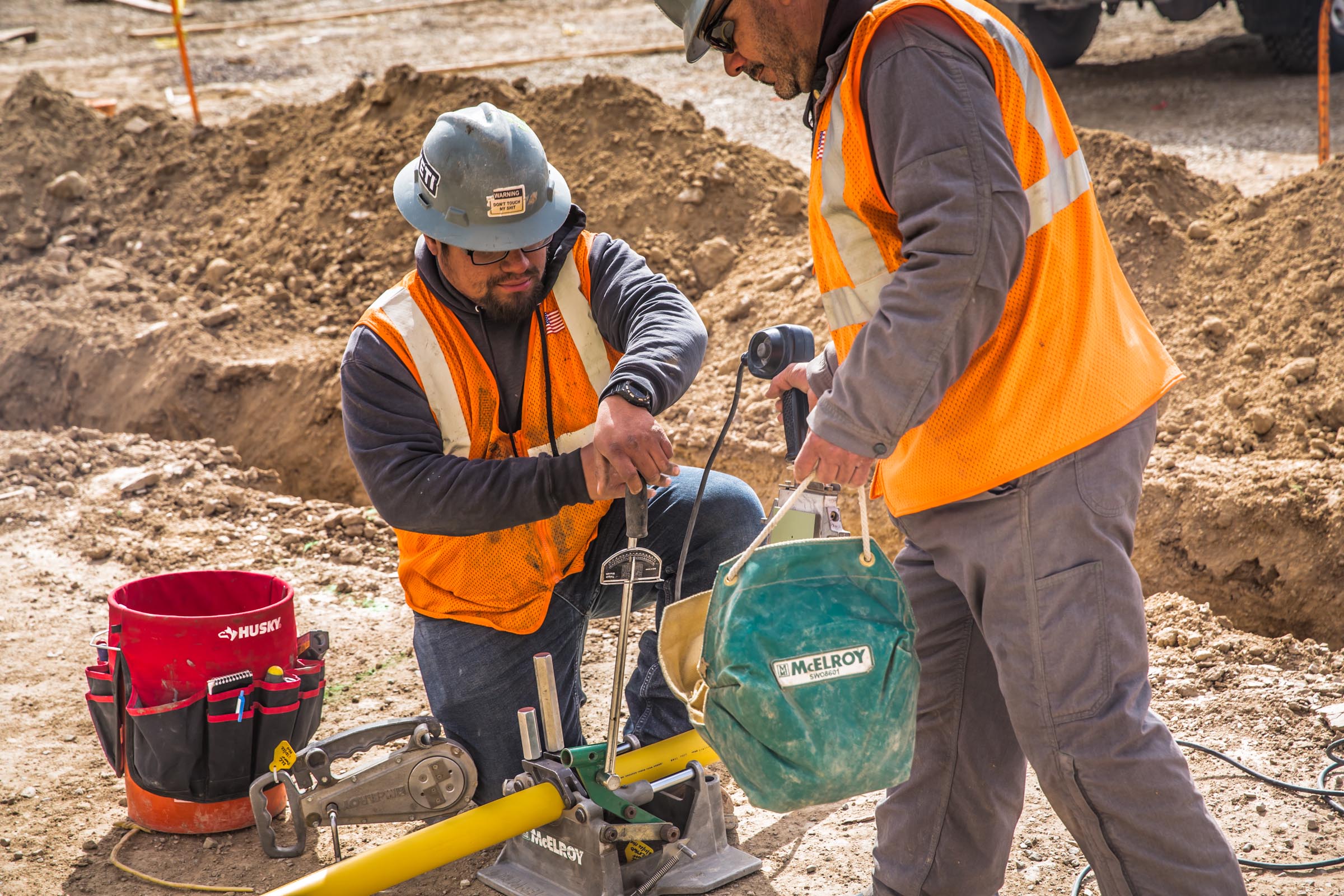As a contractor that installs natural gas distribution lines, we do a lot of fusing of plastic pipes. Heat fusion is the process of joining two pieces of thermoplastic pipe together with heat and pressure. It is an alternative to welding, which is required for steel pipes.

While we still use steel pipes for larger diameter gas lines that need to withstand higher pressures (PSI), since the early 1970’s the majority of gas lines used to bring heat to houses and other community structures are made of plastic. This change required us to transition to heat fusing.
For Diamond S Company and other gas utility contractors, the transition from steel to plastic involved both personnel and equipment changes. We had to build new trailers to transport the plastic pipes which come in coils as opposed to the straight steel pipes.
We also needed to seek training for our workers. While we still need welders for the steel piping, our guys—like everyone else’s—had to develop a whole new set of skills to fuse the plastic pipe. It was basically the beginning of a new trade. For this training, we turned to Mountain Fuel Supply Company (now known as Dominion Energy).
So, what is the advantage of plastic pipe over steel pipes? The plastic pipes are lighter, more flexible, quicker to assemble and easier work around other objects. The fact that they are coiled allows us to install a longer length of pipe—up to 100+ feet—without having to fuse. And although it’s not necessarily easier to install plastic pipes, it is faster and more efficient than steel pipe installation—and most importantly, safer, for the installer.
The drawback for contractors is that fusers are hard to find. In fact, it is very rare to find someone who already knows how to fuse pipes. That presents a problem since fusing is a critical—probably the most critical—part of our work. If the pipes aren’t properly fused and gas leaks it can cause hazardous results, including explosions and harm to both people and property as well as harm to the environment.
Since experienced fusers are hard to find, we train the majority of our fusers—90 per cent or more—in house. Our fusers typically start as laborers and work their way up to fuser.
Recently, one of our laborers transitioned to a full-time fuser. Eli, started as a laborer and learned how to fuse. After performing both duties for some time, he transitioned into working as a full-time fuser.
Some of the guys who learn to fuse really like it and choose to stay in the position throughout their careers. Others use it as a stepping stone to the next position. In fact, every Foreman that works for Diamond S. Company has worked their way through every phase of the process—from Laborer to Fuser to Equipment Operator to Foreman. This allows them to both oversee the fusing at the job site and step in and do the job if needed.
Fusing is an integral part of what we do at Diamond S Company and allows us to bring gas heat to communities in Utah, quickly and safely!

